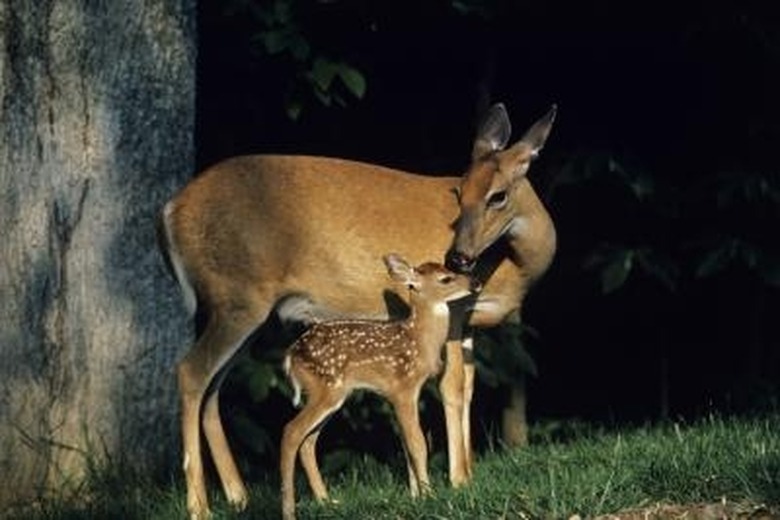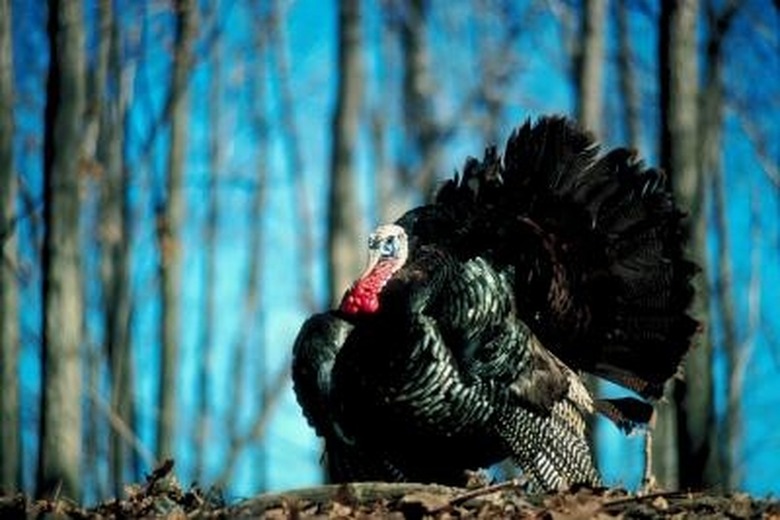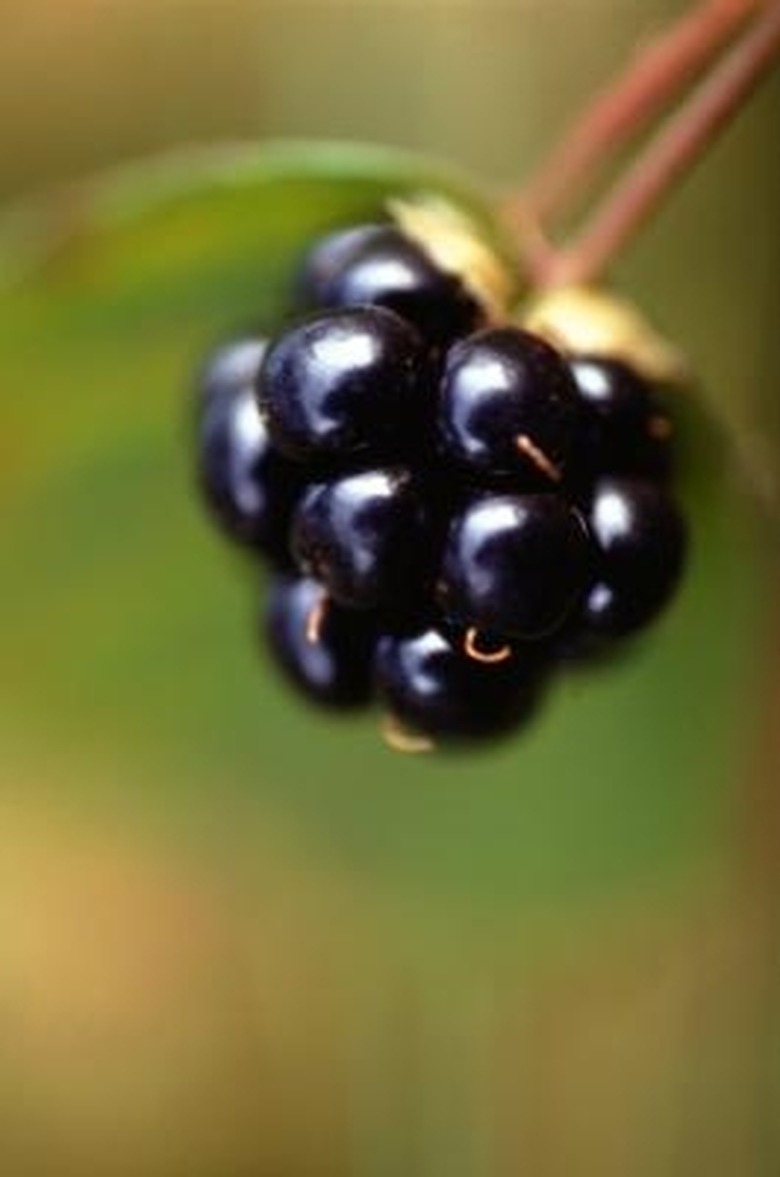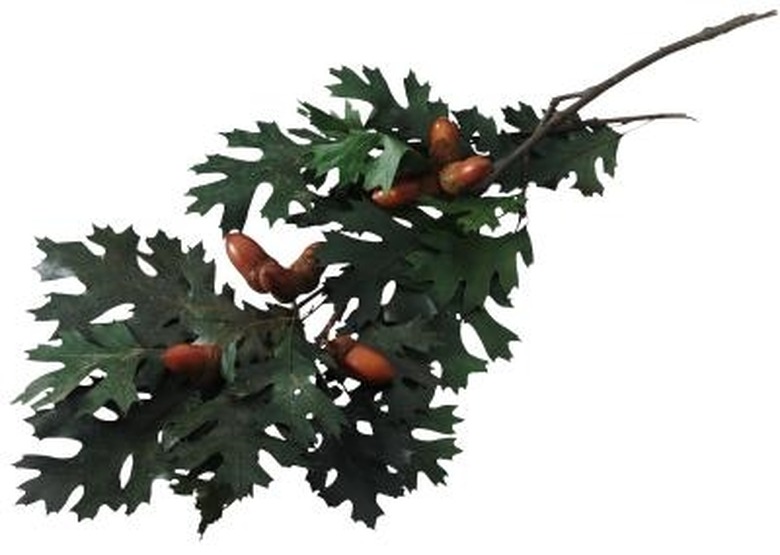The Best Trees And Shrubs That Attract Deer And Turkeys
Step 1
Deer enjoy areas of young, brushy forest where they can easily reach buds, branches and other food sources close to the ground. A mature forest may put the tastiest food out of their reach. Landowners who want to remedy this can create some forest openings and plant desirable new shrubs, trees and other plants that will attract deer. Deer typically feed in the morning, rest during the afternoon and feed again at dusk. Autumn nutrition is especially important for deer as they must be in good condition going into the winter. An inadequate fall and winter food supply means higher deer mortality.
Feeding Habits of Turkeys
Step 1
Turkeys prefer a mix of forest and open fields. As social animals, turkeys often separate into three groups — adult males (toms), females of varying ages (hens) and immature males (jakes). Adult turkeys consume about 90 percent plant matter and 10 percent insects. Shrubs and trees are important food sources for turkeys, as well as sources of protection. A flock of turkeys may be able to survive in an area that is only 10 percent forested. Their survival improves, however, when they have access to land that is 30 to 50 percent forested. Landowners can encourage turkey populations on sparsely forested land by planting more trees and shrubs.
Step 2
- Deer enjoy areas of young, brushy forest where they can easily reach buds, branches and other food sources close to the ground.
- A flock of turkeys may be able to survive in an area that is only 10 percent forested.
Fruit-Bearing Trees and Shrubs
Step 1
Blackberries are favored by both turkeys and deer. Landowners may want to plant several different varieties of blackberries so that they all ripen at different times. To prevent deer from over-grazing on the blackberries, protect the central part of the plant with a wire cage. Deer can then feed on the parts of the plant that grow outside the cage without eating the blackberry bush all the way to the ground. Peaches are another fruit much sought after by deer. Peaches ripen in the late spring/early summer. Wild grape, sumac and wild cherries attract turkeys and deer in the height of summer. Fall-fruiting trees include the flowering dogwood and persimmon. According to Dr. James Earl Kennamer from the National Wild Turkey Foundation, turkeys are particularly fond of dogwood fruit, and the berries are especially important to wildlife during years with poor acorn crops. Deer enjoy both dogwood leaves and fruit, as well as persimmons.
Step 2
- Blackberries are favored by both turkeys and deer.
- According to Dr. James Earl Kennamer from the National Wild Turkey Foundation, turkeys are particularly fond of dogwood fruit, and the berries are especially important to wildlife during years with poor acorn crops.
Nut-Bearing Trees
Step 1
Bur oaks are tough, hardy trees that provide food sources for both deer and turkey during the challenging winter season. Bur oaks are members of the white oak family, known for their sweet acorns. Bur oaks should be planted on the edge of the woods or out in the open because they do not tolerate shade well. Otherwise, they are adaptable trees that thrive anywhere, from sandy soils to moist bottomlands. Even though white oaks have the sweetest acorns, landowners should not exclude red oaks from their wildlife plantings. The same tannic acids that give red oak acorns their characteristic bitterness also make the acorns last longer, extending the amount of food available during the winter. Deer and turkeys will eat the white oak acorns first then come back later in the season to eat the red oak acorns.
Step 2
- Bur oaks are tough, hardy trees that provide food sources for both deer and turkey during the challenging winter season.
- Even though white oaks have the sweetest acorns, landowners should not exclude red oaks from their wildlife plantings.
References
- Managing Michigan Wildlife: "A Landowner's Guide — Turkeys"; M.S. Sargent; December 1999
- Managing Michigan Wildlife: "A Landowner's Guide — White-Tailed Deer"; M.S. Sargent; December 1999
- Nighthawk Publications: The Ultimate Year-Round Food Plot for Deer
- National Wild Turkey Federation: Bur Oak Provides Winter Food for Wildlife
- National Wild Turkey Federation: Dogwood Offers Prime Winter Food Source
- National Wild Turkey Federation: Hawthorn Creates Food and Cover for Wildlife



